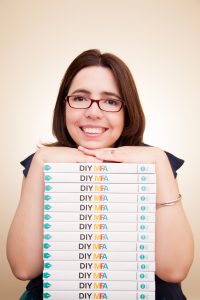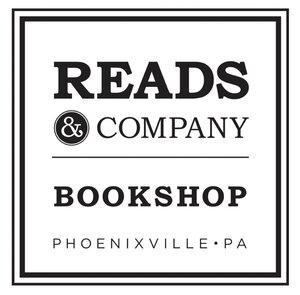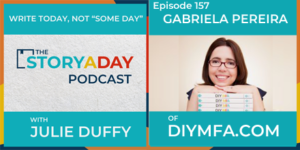Gabriela Pereira of DIYMFA talks about her belief that you don’t go to a workshop, you workshop writing and what that looks like in her DIYMFA community.
::LINKS::
Gabriela Pereira of DIYMFA talks about her belief that you don’t go to a workshop, you workshop writing and what that looks like in her DIYMFA community.
::LINKS::
How is writing like a martial art or a Montesorri school? Find out in my interview with DIYMFA’s Gabriela Pereira
And stay tuned for my thoughts on Caroline Kim’s prompt for the StoryADay Challenge
::Links::
Choose a nursery rhyme.
That is going to be the plot of your story.
The key with this exercise is that now choose an author whose voice you love.
Write that story with that character, but in the voice of the author you chose.
This is actually a great prompt to do more than once. Once you’ve done this exercise, you may want to come back to it after the StoryADay challenge and do it again, choosing different writers as the inspiration for the voice.
If you do this, use the same Nursery Rhyme each time. Then you’ll start to get a sense of how, when you’re putting on another author’s voice, you’re sort of wearing that author’s voice suit, how your voice behaves in that ecosystem, and eventually you’ll start to get a sense for what your voice is and what you bring to the table that is completely unique and you can then, write.
After you’ve done it two or three times, I want to challenge you to write that same story in your own voice with your own storytelling awesomeness. This is a great exercise to practice stretching yourself a little bit in terms of your voice, but also to help you find your voice.
People always say, you need to find your voice. Well, you never lost it in the first place. It’s always been there. This will just help you uncover. The things that make your voice especially unique. So there you have it, the Nursery Rhyme Exercise

Gabriela Pereira is a writer, teacher, and self-proclaimed word nerd who wants to challenge the status quo of higher education. As the founder and instigator of DIYMFA.com, her mission is to empower writers to take an entrepreneurial approach to their education and professional growth. Gabriela earned her MFA in creative writing from The New School and teaches at national conferences, at local workshops, and online. She is also the host of DIY MFA Radio, a popular podcast where she interviews best-selling authors and offers short audio master classes.
Gabriela is a long-time friend of both myself and the StoryADay community. To find out more about DIY MFA, click here.

This year’s StoryADay May official bookseller is Reads & Company, a privately-owned indie bookseller in Pennsylvania. Any purchase from the site this month supports Reads & Co.

Leave a comment to let us know what you wrote about today, and how it went!

We talk about the pillars of a writing life, why Gabriela wanted to create a do-it-yourself DIYMFA, and that old favorite: Imposter Syndrome.
Continue reading “157 – Gabriela Pereira from DIYMFA Part 1”
When I started StoryADay May back in 2010, some of 100 or so people who took part really stuck with me. One was Gabriela Pereira, who had just finished up an MFA and was transitioning from student to working writer. We shared an enthusiasm both for writing and for the hair-brained scheme.
Back then, I was a couple of years ahead of her in the online, community-building, content-marketing , writing-for-pay experience. Now she has soared into the writing world as a leader, a teacher, an inspirer and, in her own words, Chief Instigator at her project: DIY MFA.
This afternoon I tuned in to her latest webinar, sort of as a favor. I’ve heard the talk before, live and in person, and was really just showing in case no one else did. Of course, there were tons of people on the call, loads of questions from attendees, and Gabriela fired people up and sent them away with tools and techniques to make their writing better, as always.
But — it shouldn’t surprise me, but it did — what I hadn’t expected to happen was that I had a breakthrough about my own novel-in-progress, while listening to Gabriela talk. Suddenly, I knew exactly what the turning point at the mid-point of my novel needed to be. More than knowing it, I could *picture* it.
I rushed off to my office and scrawled three pages of notes, opened up Scrivener and started adding scene cards to the second half of my novel’s file. I got super excited, and then realized how much writing I had to do…then chose to see that as exciting too!
Did I mention I’ve heard this talk at least twice before?
Lesson learned: when you find a teacher/mentor/friend whose words you really connect to, stick to them. Revisit their lessons. Re-read their books. Get on webinars and conference calls with them. Ask questions. Go over and over their lessons at different stages of your development and the development of each of your projects.
When the student is ready, the teacher appears, as my old mate the Buddha apparently never said.
If you want to get in on the remaining webinars in Gabriela’s current series, here’s some info:
Perfect Your Plot, Structure Your Story – December 14
Rock Your Revisions – December 21
(Some links on this page—the webinars and the one to Scrivener—are affiliate links, but I never recommend anything I don’t believe in 100%.)
This prompt…exercises your brain in a new way.
Today’s prompt comes from the Chief Instigator of the DIYMFA program, Gabriela Pereira. Always full of writer-craft goodness, you should definitely be checking out DIYMFA.com, always full of writer-craft goodness, and the wonderful weekly DIYMFA Radio podcast.
Famous Last Words
Most prompts give you a place to start and let you take things from there. Today we’re going to flip the equation. I’m going to give you a last line and you need to write toward it. In other words, your assignment will be to write a piece that leads you to that last line.
The reason this prompt is so useful is that it exercises your brain in a new way. As writers, we’re used to taking a kernel of an idea and running with it, but it’s a totally different proposition to have a fixed ending and finding your way to it.
You may someday find yourself in a situation where you need to use this skill, like if you know your ending but haven’t figured out yet how to get there. This prompt is great practice for doing just that.
Take the last line from your favorite book or choose one from the list below. Now write a short piece that ends with that line.
1. No one has claimed them yet.
2. “Let me tell you about it.”
3. Everything must go.
4. “Make me pretty.”
5. And it was still hot.
These are all last lines from actual books. Can you guess which books they came from? Answers are below.
1) From the Mixed Up Files of Mrs. Basil E. Frankweiler by E.L. Konigsburg
2) Speak by Laurie Halse Anderson
3) Feed by M.T. Anderson
4) Uglies by Scott Westerfeld
5) Where the Wild Things Are by Maurice Sendak

Gabriela Pereira is the founder of DIY MFA, the do-it-yourself alternative to a Masters degree in writing. She is also a speaker, podcast host for DIY MFA Radio, and author of the forthcoming book DIY MFA: Write with Focus, Read with Purpose, Build Your Community (Writer’s Digest Books, July 2016). For more info and email updates, sign up for her newsletter.